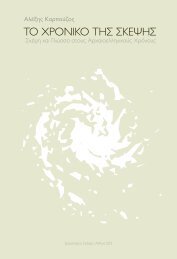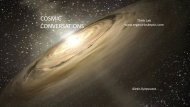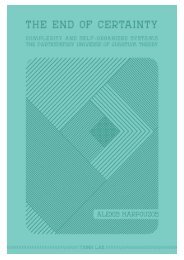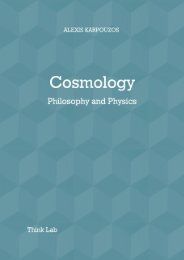THE 4TH DIMENSION IN ART AND SCIENCE - ALEXIS KARPOUZOS
A visual narrative of the relationship between science and art during the 20th century
A visual narrative of the relationship between science and art during the 20th century
You also want an ePaper? Increase the reach of your titles
YUMPU automatically turns print PDFs into web optimized ePapers that Google loves.
The French mathematician Henri Poincaré gave an answer to<br />
the question: “Is Euclidean geometry true?” “It has no meaning.<br />
We might as well ask if the metric system is true, and if the old<br />
weights and measures are false; if the Cartesian co-ordinates<br />
are true and polar co-ordinates false. The geometrical axioms<br />
are not experimental facts. On the contrary, observing several<br />
natural phenomena leads to a selection of some assumptions<br />
among all the possible ones… The ones selected are simply<br />
the most convenient and no one can tell that Euclidean<br />
geometry is true and Lobachevsky’s is false. One geometry<br />
cannot be more true than another; it can only be more<br />
convenient.”<br />
For Kant, on the other hand, Euclidean geometry is inherent<br />
to the construction of human mind, inherited a priori; it is<br />
not a result of experience. Poincaré supported that we<br />
create geometry according to the stimuli we get. Through<br />
natural selection, our spirit was adapted to the conditions<br />
of the external world and adopted the more favorable<br />
geometry for our species, the most appropriate in other words.<br />
Our geometry is not true, it is favorable!









